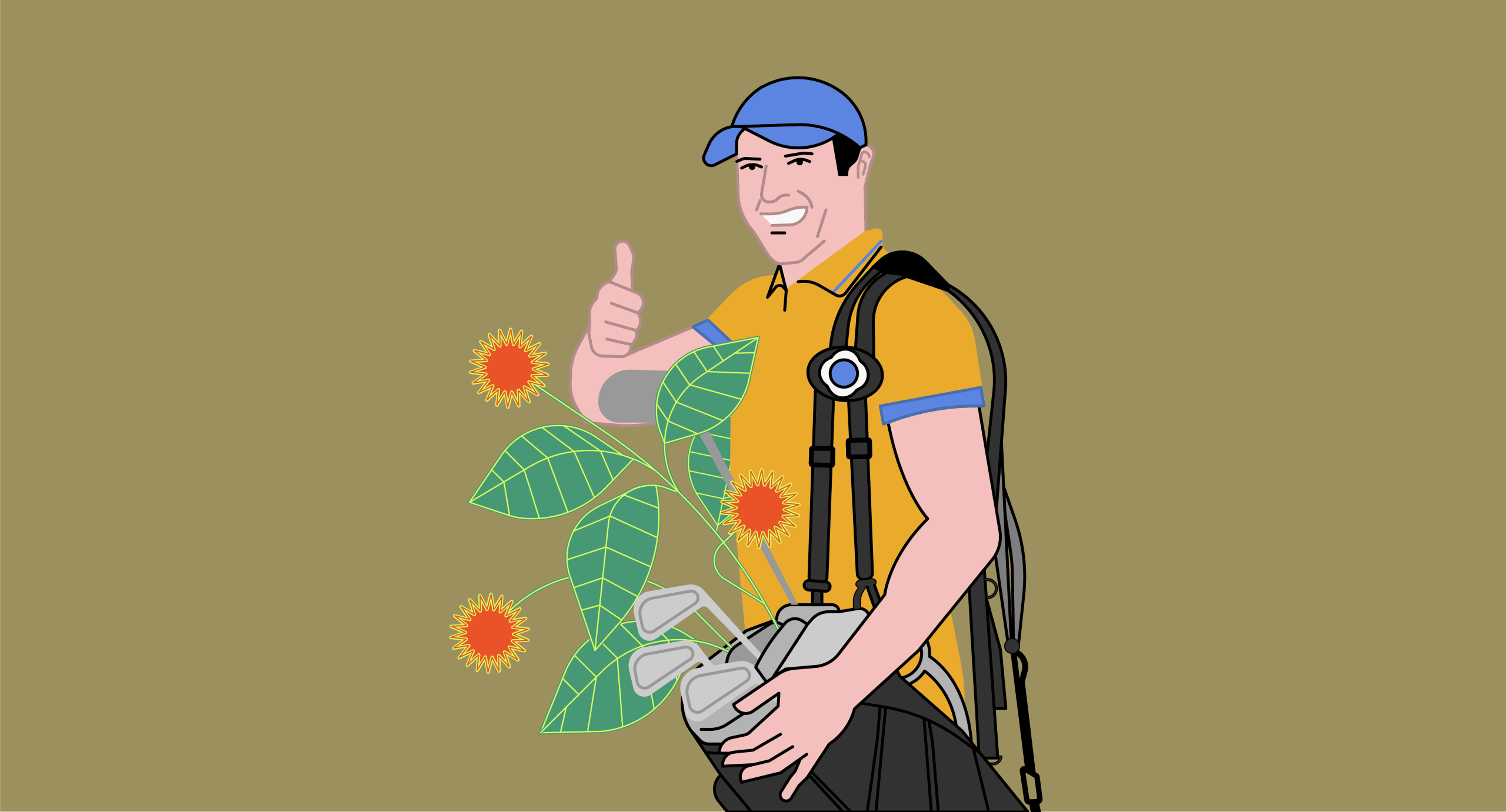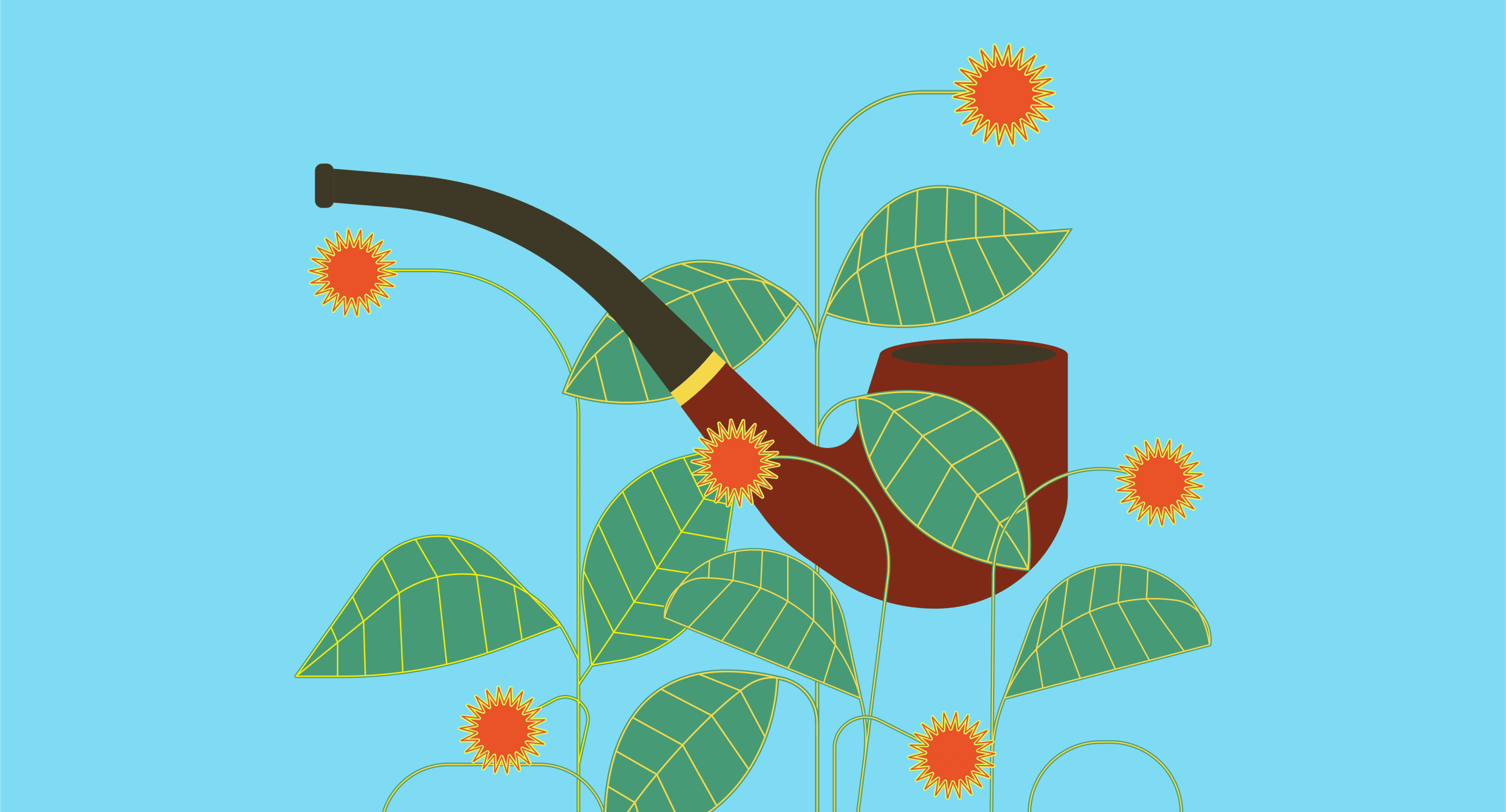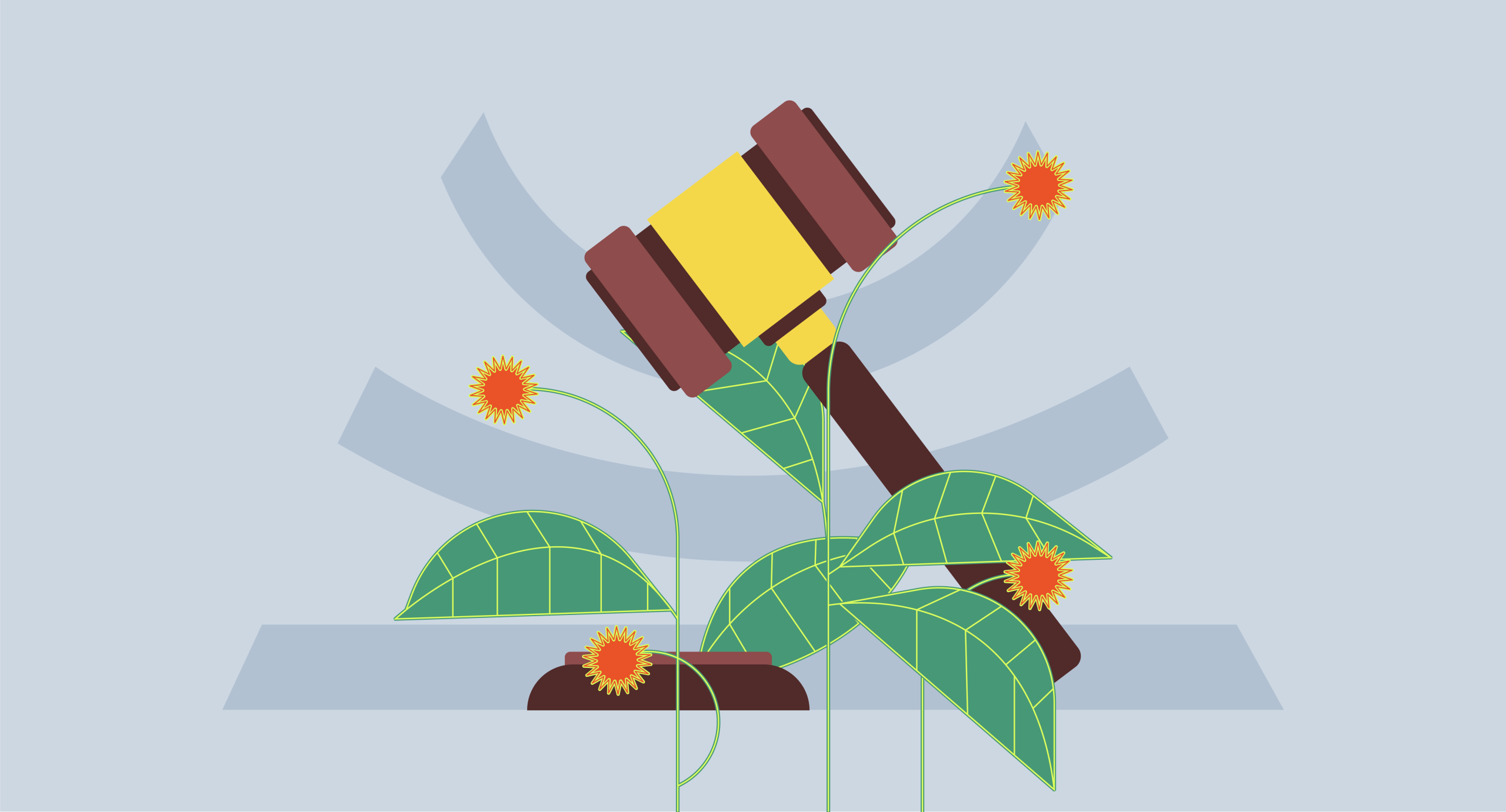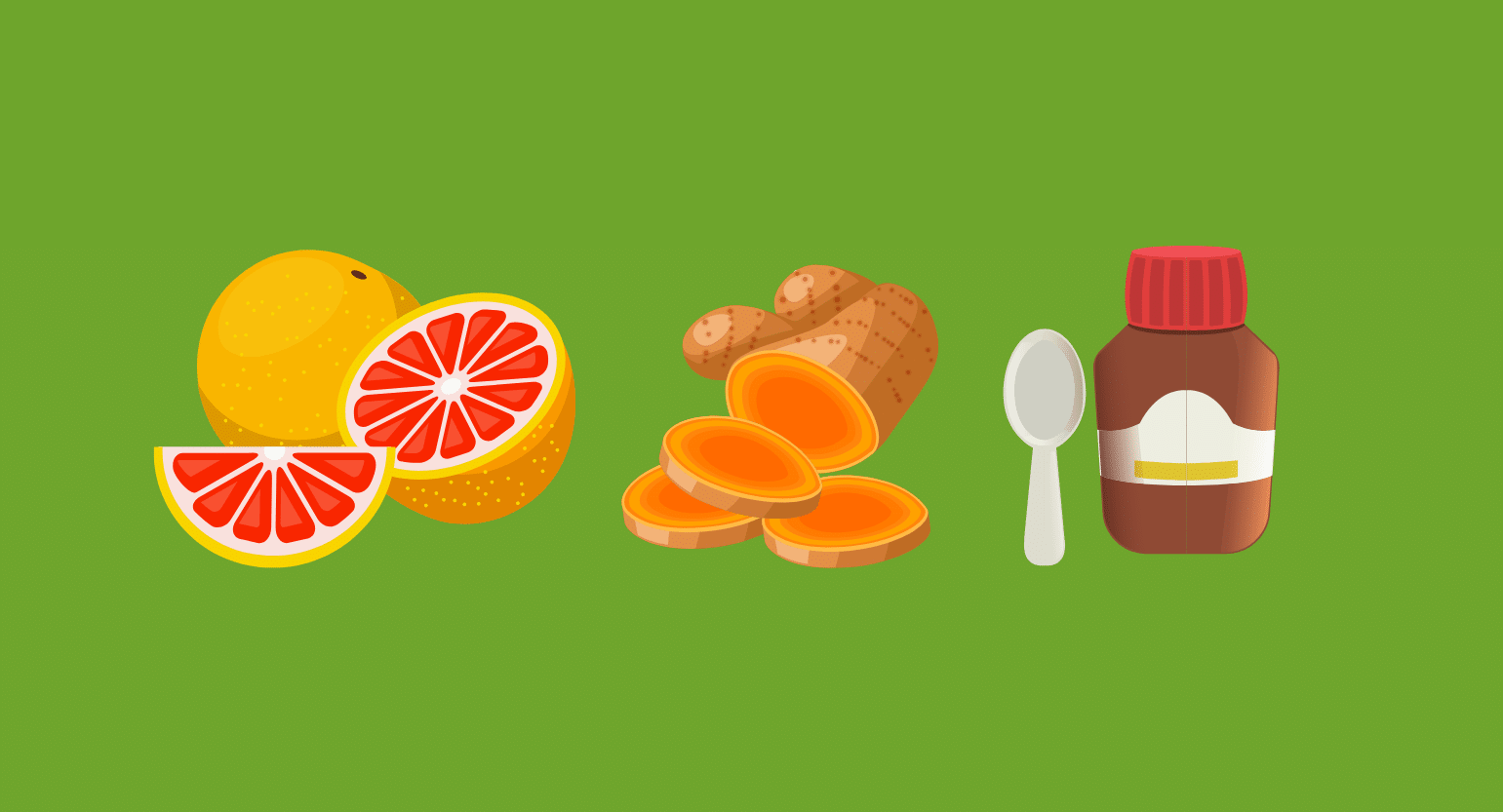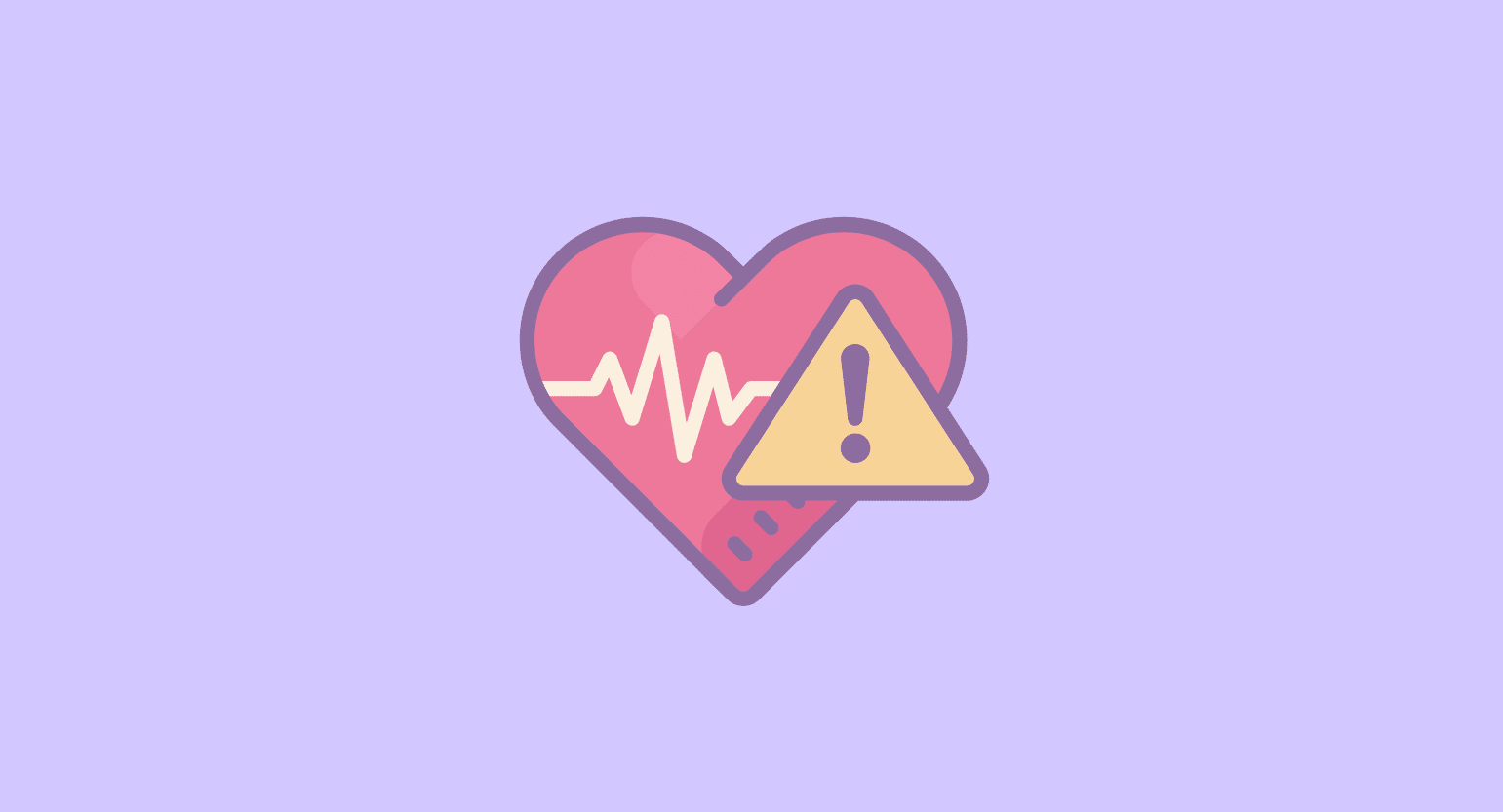4 Common Golfing Injuries & How to Prevent Them
The best way to treat an injury is to prevent it in the first place. Here are four common golfing injuries and steps to minimize the risks.
1. Back Pain
Lower back pain is a common symptom of many sports-related injuries, and golf is no exception. Golf swing mechanics require players to generate a lot of rotational force, and improper movements can easily lead to lower back pain [1].
The joints in the lower back are not good at moving rotationally; they mostly hinge forwards or backward. You’re taught to rotate from your upper back (thoracic spine) and your hips in golf. However, many golf players lack the mobility to turn correctly. They compensate by rotating from the lower back, a common cause of golf-related lower back pain.
Preventing Lower Back Pain in Golf
The obvious solution to avoid pain in golf is to avoid rotating the lower back. You can quickly identify this flaw by recording your swing and then analyzing it. If your head is pointing towards the target at the top of your swing instead of away, then you’re likely rotating from your hips. When you turn the proper way, your head will point farther away from the target in relation to your pelvis. Also, don’t forget to work on your upper back and hip mobility.
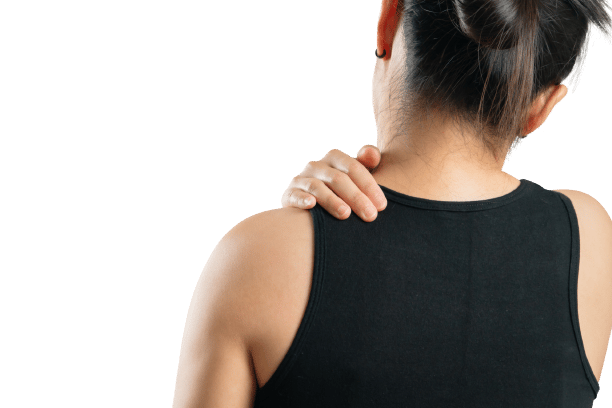
2. Injured Shoulder
The shoulder joint is the most mobile and, therefore, unstable. In the golf swing, the two shoulders perform very different movements and are exposed to different risks.
Lead shoulder injuries are more frequent in golf, with subacromial impingement and rotator cuff tears being the most common. This is due to the wide and fast-moving nature of the golf swing. When golfers keep the lead shoulder arm tight to their chest as they swing back, they can tear the labrum that stabilizes the shoulder joint.
Preventing Shoulder Injuries
Similar to the lower back, shoulder injuries in golf mainly result from a lack of movement. Proper upper body mobility is essential in preventing them. If you have already injured your shoulder, you’ll likely require an adequate regiment of physical therapy to strengthen your shoulder and recover the necessary mobility.
3. Elbow Injuries
Golfer’s elbow is a common condition where pain affects the forearm muscles’ tendons, especially in the bony segment where they attach to the inside of your elbow. A golfer’s elbow is caused by over-stressing the tendon, and, as you might have guessed, it is a common injury in golf, although it’s also seen frequently in tennis and baseball.
Torn ligaments are another issue, often caused by hitting something hard or improper form.
Preventing Elbow Injuries
Since overuse is the most common cause of Golfer’s Elbow, there’s little that can prevent it except to play less.
Treatment for Golfer’s elbow will almost always use non-steroidal anti-inflammatory drugs (NSAIDs), hot and cold treatment, and a type of elbow strap to reduce strain. More severe cases of Golfer’s elbow will require physical therapy to reduce inflammation and recover range of motion [2].
Sharp pain in the elbow could be a sign of a strained or torn ligament and could need further treatment from a doctor.
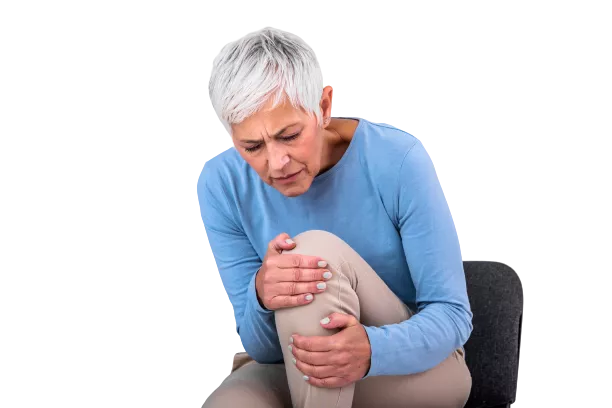
4. Knee Pain
The mechanics of a golf swing can place a lot of force on the knee joint, resulting in inflammation of tendons, torn ligaments, cartilage, or other soft-tissue damage. Also, the twisting motion in the knees can lead to further injury.
Preventing Knee Pain
One of the most fundamental ways to prevent knee pain when golfing is to take the proper time to warm up. In other words, make sure your knees are ready to absorb the force of your golf swing. Another easy fix is to use the proper golfing footwear. Wearing inappropriate golf shoes is a common contributor to golf-related knee pain.
Treating Common Golf Injuries
You went golfing and came home hurting. Maybe you already know where you went wrong or aren’t sure what happened. Either way, you don’t want it to happen again.
There are a few ways you can help heal golf injuries — it requires treating them like any other injury.

1. Ice It
Icing right after an injury constricts blood vessels, reducing swelling and pain — though be careful not to overdo it. Icing for 20 minutes, then taking a twenty-minute break is effective. Make sure to never apply ice directly to the skin.
Don’t use heat, as this can worsen the situation. Save the heat for warmups or the recovery phase — not right after you get hurt.
Related: Hot vs. Cold Treatments for Pain
2. Rest
Since many golf injuries are from overuse, it only makes sense to rest what hurts. Pushing through the pain will only make it worse and prolong the treatment.
This doesn’t mean not golfing; simply take it easy with the hurt body part. It might mean less time on the course or more use of the golf carts — be honest with what you can handle.
Elevating the injury is also beneficial when it’s possible.
3. Anti-Inflammatory Medication
NSAIDs like ibuprofen will help reduce pain and inflammation from sports injuries. Make sure to follow the directions for dosing. Combined with the other treatments on this list, you’ll be out golfing in no time.
4. Occupational Therapy
Some injuries need more than just ice and rest. Occupational therapy can help with Golfer’s
Elbow and other pain when standard treatments aren’t enough. Your doctor can help you decide what’s best and what steps to take.
5. Surgery
Obviously, this is the last resort and often has more to do with pre-existing conditions. Still, it’s an option when all else fails, and the pain or immobility is too much.
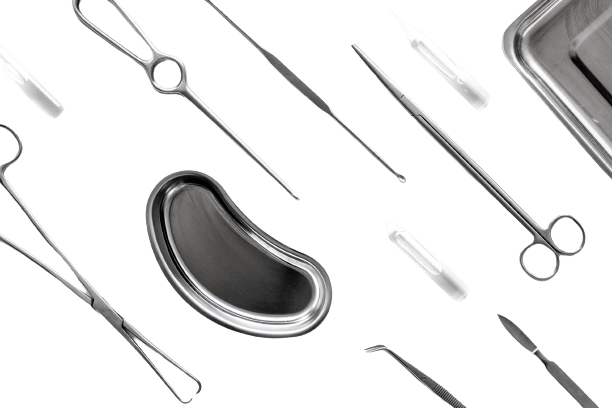
Can Kratom Help With Golf Injuries?
Many people mistakenly assume kratom mainly has stimulant-like properties, but this is only one side of the kratom spectrum. In fact, kratom is what’s known as a spectrum drug. These compounds are unique because their effects profile changes according to the dosage. In the case of kratom, the effects bleed over from nootropic and stimulant-based into pharmacological.
Kratom has two main benefits: analgesic and anxiolytic (anti-anxiety), and can be a great way to reduce the pain stemming from golf-related injuries. Its two main alkaloids are opioid receptor agonists and act similar to opioids. However, make sure you choose the right strain for the job for the best results.
How to Use Kratom for An Injury
If you want to treat injuries, red vein kratom strains are the best choice. These strains can help stimulate the pharmacological side of the kratom spectrum, which means you’ll get more of the pain relief you’re looking for.
The best strains for pain include:
Dosage is also an important player when treating pain. A small amount (2-5 g) of a red vein might work if the pain is mild, but more severe pain requires larger doses (6-12 g). Don’t jump in headfirst — start with a small and work your way up. The more you take, the more likely you will experience side effects like nausea, dizziness, headaches, and irritability. Plus, kratom can be addictive, so the less you use it, the less likely you are to become dependent.
There is an important caveat to using kratom for pain. The analgesic benefits of kratom cannot heal the underlying physical issues that underlie these injuries. In most cases, physical therapy and even surgery might be necessary. Usually, the RICE method can be enough. RICE stands for: rest, ice, compression, and elevation. If the RICE method does not resolve your injuries, we suggest you contact your doctor.
Related: Is Kratom Safe?
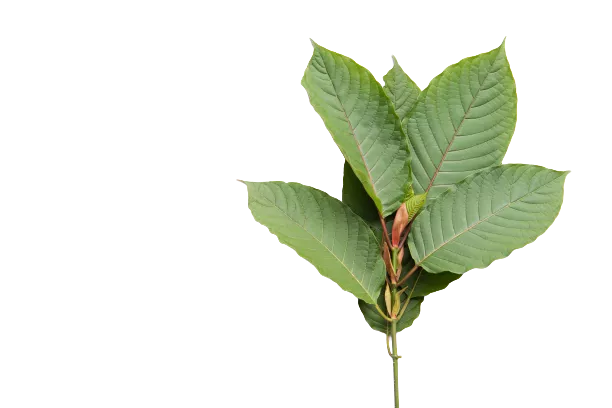
Conclusion
If you want to golf and reduce your risk of injury in the meantime, then make sure to follow the tips laid out in this article. Also, don’t be afraid to seek help: the golf swing is a complicated movement, and it can be pretty easy to develop bad habits while learning.
If you are currently dealing with a gold-related injury, you should consider kratom if you want something to help you deal with the pain. Kratom is a much safer, all-natural alternative when compared to pharmacological pain killers.
- Urits, I., Burshtein, A., Sharma, M., Testa, L., Gold, P. A., Orhurhu, V., … & Kaye, A. D. (2019). Low back pain, a comprehensive review: pathophysiology, diagnosis, and treatment. Current pain and headache reports, 23(3), 1-10.
- Amin, N. H., Kumar, N. S., & Schickendantz, M. S. (2015). Medial epicondylitis: evaluation and management. JAAOS-Journal of the American Academy of Orthopaedic Surgeons, 23(6), 348-355.

